Watercress (Nasturtium Officinale) is either known as watercress, River Runner or Wet River. It is called so because it grows near springs, mountain streams and rivers, up to about 1, 500 m altitude. In essence it’s a herb, but some experts classify it as a leaf vegetable, as in southern Europe and the Middle East is widely used as an ingredient for a variety of salads.
Garden cress (Lepidium sativum), comes from northeastern Africa and southwestern Asia. Belongs to the Brassicaceae family and is an annual plant. Cress (Lepidum sativum) can not be grown in the home garden with our other spices because grows best in shallow waters, especially in calcareous springs.
Growing in pots is very easy to please as long as it needs regular water. It is sown the first 7-10 days from early spring to the onset of heat and again in late summer. The rows should be 20-25 cm Later, after thinning the plants leaving the 8-10 cm apart.
2-3 weeks after germination watercress may already picked. During this short period, it is watered regularly and soiled once. Watercress can grow into sprouts, but the whole plant that reaches 30 to 60 cm
History of Watercress
Homeland of Watercress is considered Persia, and is considered one of the first plants that people began to cultivate - was used by Greek and Persian soldiers as a stimulant and to offer better tone and durability. To the old continent, it came in ancient times, grown in Greece and Rome. In ancient Egypt, it was a valued plant intended as a gift for pharaohs, when they are laid to rest in the pyramids.
Romans called it "wrinkled nose" for the spicy scent that it exudes. There is also a claim that Hippocrates founded the first hospital close to a stream, near which grew watercress to use fresh stems of the plant for the treatment of patients. Cultivation began in the XVI century, and grows in the wild throughout Europe. Watercress leaves are smooth, oval and green in color.
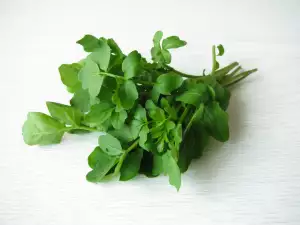
Chemical composition and nutrients in Watercress
100 g garden cress contains only 11 kcal. Watercress is a valued source of readily absorbable iodine, and further comprises vitamins: A, B1, B2, E, PP. The minerals contained sulfur, chromium, potassium, manganese, magnesium and calcium. Watercress leaves are rich in vitamin C, and R from the group C, calcium, magnesium, iodine, and iron, and also of carotene, rutin and quite mineral salts. The plant is rich in various chemicals, including glucosinolates, lutein, flavonoids, hydrocine acids. 80 g Watercress provides the recommended five servings of fruits and vegetables a day.
Selecting and storing Watercress
When choosing watercress, note that the color is fresh green without yellow and wilted leaves. Stems of the blades must be very strong, with no wilted areas.
To preserve the freshness of watercress for a long time, there are also some minor tricks. Watercress will not yellow if you wrap in a damp paper newspaper. So wrapped up, you can put it in the lower compartment of the fridge and save it for another day or two. If you don’t have a refrigerator at the moment, just soak it in a cup of cold water to the middle of the stems.
Culinary use of Watercress
The history of Watercress is interesting and varied. It is important to know that Watercress is very perishable, so use it as soon as you buy it. In English, the plant was once called "the bread of the poor" because of the tradition of working class people having their breakfast in the morning with a watercress sandwich, if there was no bread.
Today, Watercress is used for the preparation of many soups or salads in combination with olive oil and vinegar. Watercress is used cooked with green leafy vegetables and potatoes in cream soups. The taste and flavor matches well with avocado salads and sauces for fish and for decoration with roast meat and game. Often used for fresh accompaniment to main dishes. Some authors call Watercress a natural superfood.
Today, watercress is often used in sandwiches. Consumed as a side dish to red meat, fish and poultry, salads or cooked in sauce. Watercress leaves are juicy and fresh with a spicy taste somewhat reminiscent of horseradish.
Garden cress sprouts are delicious and healthy and we can grow them in pots at home at any time of year. Cut leaves of Watercress as chives and add it to cottage cheese or just place it on toast with butter.
Spring salad with watercress
Ingredients: eggs - 6, asparagus - about 30 seedlings, cress - 100 g, olive oil - 3 tbsp, Parmesan cheese - 100 g
Preparation: Boil the eggs for 5 minutes. Cool them, peel them and cut into 2 g or 4 pieces each. Clean the asparagus, leaving only the white part. Then cook them in salted water for 4 minutes or until tender. Mix in a large bowl with asparagus and arrange the eggs on top. Sprinkle with olive oil, a little salt and pepper and grated Parmesan.
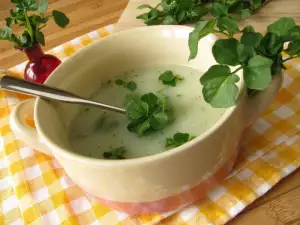
Health Benefits of Watercress
Watercress is known as a cure for ulcers on the skin, disinfects the mouth and digestive tract. Should appear in the menu for pregnant women and children. You can not overdo it, as it is highly diuretic - stimulates the flow of urine and helps to cleanse the body of toxins. Promote the good work of the kidneys, facilitates urination and relieves bladder problems.
For centuries in different cultures, Watercress was used for breaking stones in the kidneys or bladder in ancient times was used as a herb for sleep that relaxes the nervous system. Indians of North America used Watercress for pain in the kidneys and liver to break up gallstones. In England during Queen Victoria, before oranges become an affordable commodity, Watercress had been consumed as a means to prevent scurvy.
Cress is recommended for underactive thyroid glands due to its iodine content. Possesses antioxidant activity and stimulates digestion. Watercress may be used to improve the separation and the flow of bile, which facilitates the work of the liver, for the relief of pain in the gallbladder, but is known to be useful for the digestion. The high content of iron in Watercress is useful in anemia, but the iron in combination with folic acid, which is also rich, makes the plant very suitable for pregnant women.
Watercress is an excellent food for physically weak people. It is rich in antioxidants and inhibits stress at high load and contributes to maximizing the value of peak exercise. Even small amounts of watercress immediately increase the level of antioxidants in the body. Immediately before loading, Watercress will protect you from the negative effects of intensive exercise.
Watercress is the richest natural source of specific essential PEITC oil of mustard, which in animal experiments and later with humans showed that it fights cancer cells. Watercress may reduce the risk of breast cancer and prostate cancer.
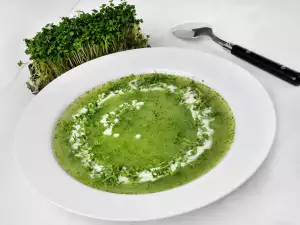
Beauty and slimming with watercress
The famous English herbalist from the 17th century - Nicholas Culpepper, recommended the bitter, slightly pungent and exciting taste of Watercress for "cleaning the face" of pimples and spots. Today Watercress is a very effective tool for removing freckles and getting beautiful hair.
Cress is used in certain types of cosmetic products. In addition, it improves the appearance of your skin and nails, it clears rashes and eczema. It is known that the French wiped out freckles and "Deleted" pigment spots with the juice of watercress, which has a strong whitening effect.
Watercress can help you lose weight because it is a low-calorie, leafy green vegetable. It can be an essential ingredient of various diets. Furthermore, 85% of the calories in Watercress are formed of proteins, which is an extremely large amount.
Including watercress regularly in your diet, you will speed up metabolism will improve your physical endurance and the "magic plant" will help you dispose of excess fluid from the body because it is a great antioxidant.

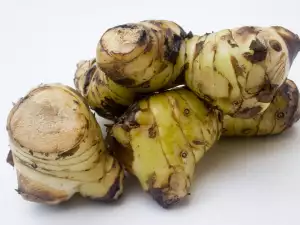

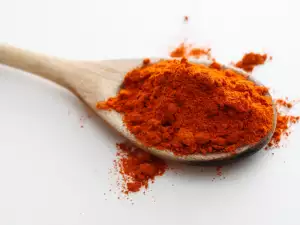
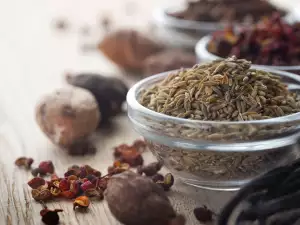
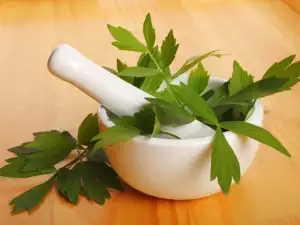


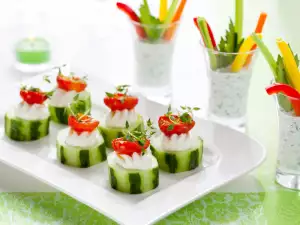



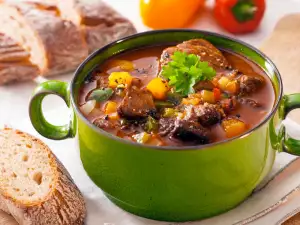
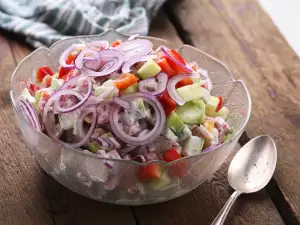
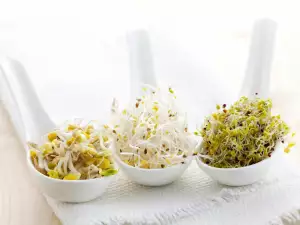



Comments